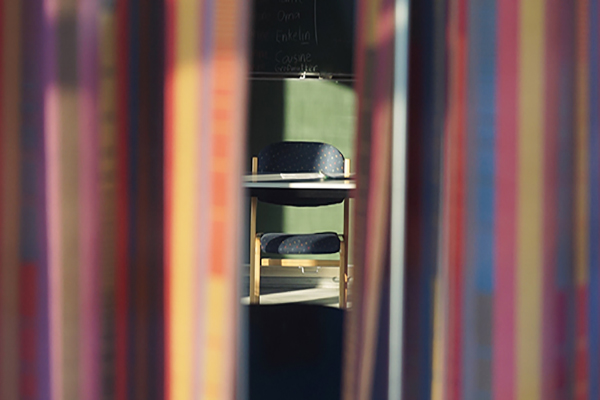In a period of retrenchment when schools are being asked to do more with less, the issue of where the resources will come from is a difficult one to solve. If they don’t exist within the school then they will need to come from outside it. Luckily, in every community there are talents, skills, experiences and ideas that could vastly enrich the social, human and intellectual curriculum. The following comprises three ideas that have worked.
1. Schools-industry twinning
Woodberry Down, an inner-city London school, had a rich ethnic mix within its catchment area and a high proportion of one-parent families. It was situated in a difficult area of inner London with an unenviable local crime record, where only the suicidal policemen patrol alone at night and where there is very little regarding a background of learning, much less lifelong learning.
By contrast, the city office of the mighty IBM, three miles away was situated in the City of London, one of the richest areas in the world. It employed 700 highly trained professional people – systems analysts, salesmen, managers, experts on all aspects of computing, and most of them with complementary talents, skills, experiences and knowledge outside of their work life.
These two apparently incompatible organisations explored how each could help the other. So meetings were held at both locations and a social evening arranged. As a result of this a coordinator, actually the wife of one of the IBM managers and formerly a social worker, was employed to track needs and solutions. She talked at length with the staff of the school, with the managers in the IBM location, and discussed how the skills and knowledge of one organization could be used to improve the situation of the other in a two-way collaborative approach.
What happened next?
A total of 30 joint projects and events took place over the next four years which changed the outlook of teachers and businesspeople towards each other. The collaboration broke down the stereotypes and provided human, intellectual, social, and financial resources, mainly for the school, but also valuable insights for the company. 10% of the company’s 700 staff took part, giving varying amounts of time; three to four hours per week to enrich the education of Woodberry Down’s children. These are a couple of examples:
- Teams of IBM staff met with school-leavers to advise on interviewing skills and run mock interviews in order to help youngsters improve their performance.
- Each term a discussion session on a particular topic such as leadership, management, computing in education etc. was held at the school and at the IBM location for an exchange of views leading to action, for example, teachers embarking on IBM management courses, children visiting the IBM office to take part in work shadowing and mentoring, as well as additional resources for needy pupils.
2. Mawson Lakes School, South Australia.
Mawson Lakes School uses all the resources in the community to deliver education to its children. One is as likely to see a grandmother sharing a mathematics lesson, as a child learning Indonesian via a television link to Djakarta.
Its vision is ‘to create a lifelong learning community where learning is available for everyone, at any time, and in any place. Educational services will contribute to the economic sustainability of Mawson Lakes and become a catalyst and a conduit for the creation of a community that has a culture of continuous improvement.’
The many factors in its manifesto include:
- Optimal use of information and communication technologies.
- New resource models for education.
- A global community connected internationally and learning collaboratively with children from many cultures and countries.
- Working partnerships with higher and further education, business, media and all parts of the community.
- Educational services accessible to all and appropriate for all in the community.
Such schools are becoming ‘learning organisations’, where the objective is to ensure that everyone within, and connected to, the institution is valued and valuable, and where the means of expressing this is through their love for learning and their willingness to actively support it. Such values should be continuously proclaimed to the staff, the children, the parents, the governors, the community around the school and its international partners, all of whom provide valuable additional resources.
3. Learning Materials from then the internet
The internet provides a huge additional resource for a school. Learning materials abound (e.g. http://eurolocal.info). Among many other learning materials, there is a ‘Schools Stakeholder Audit’, a number of exercises for teachers and administrators that enables them to convert the school into a 21st-century learning organisation within a Learning City. Other ‘audits’ include exercises on support systems, management and leadership, quality and standards, curriculum skills and values, assessment, resources etc.
Much of the content of this blog is taken mainly from Lifelong Learning in Action, - Education in the 21st Century, Norman Longworth, (Taylor and Francis) and Learning Cities, Learning Regions, Learning Communities’ Norman Longworth, (Taylor and Francis), where other examples of tools and resource management can be found and the reports from European Commission projects managed by its author, who will happily answer further questions.
For more information email Norman Longworth FRSA [email protected]
Get involved with RSA: Innovative Education
The RSA wants schools and colleges to tackle ingrained inequality and prepare young people for the economy of the future. We believe that the best way to do this is to put power back into the hands of the educators and give them space to be creative. You can join the RSA in our mission to do just this:
JOIN THE INNOVATIVE EDUCATION NETWORK
BECOME A SCHOOL GOVERNOR OR TRUSTEE
TELL US ABOUT YOUR INNOVATIVE EDUCATION IDEA
Related articles
-
The Ideal School Exhibition: rediscovering education's true purpose
Julian Astle
What kind of schooling will prepare young people not just to write a good exam, but to live a good life?
-
The Ideal School Exhibition – the RSA needs your help!
Julian Astle
Do you know a school that nurtures students' creativity & a life-long love of learning? We want to hear from you.
-
Blog: Creative teaching in the age of austerity
Robert Litten
Robert Litten discusses the need for schools to turn to their own teachers to achieve educational innovation and excellence.




Be the first to write a comment
Comments
Please login to post a comment or reply
Don't have an account? Click here to register.